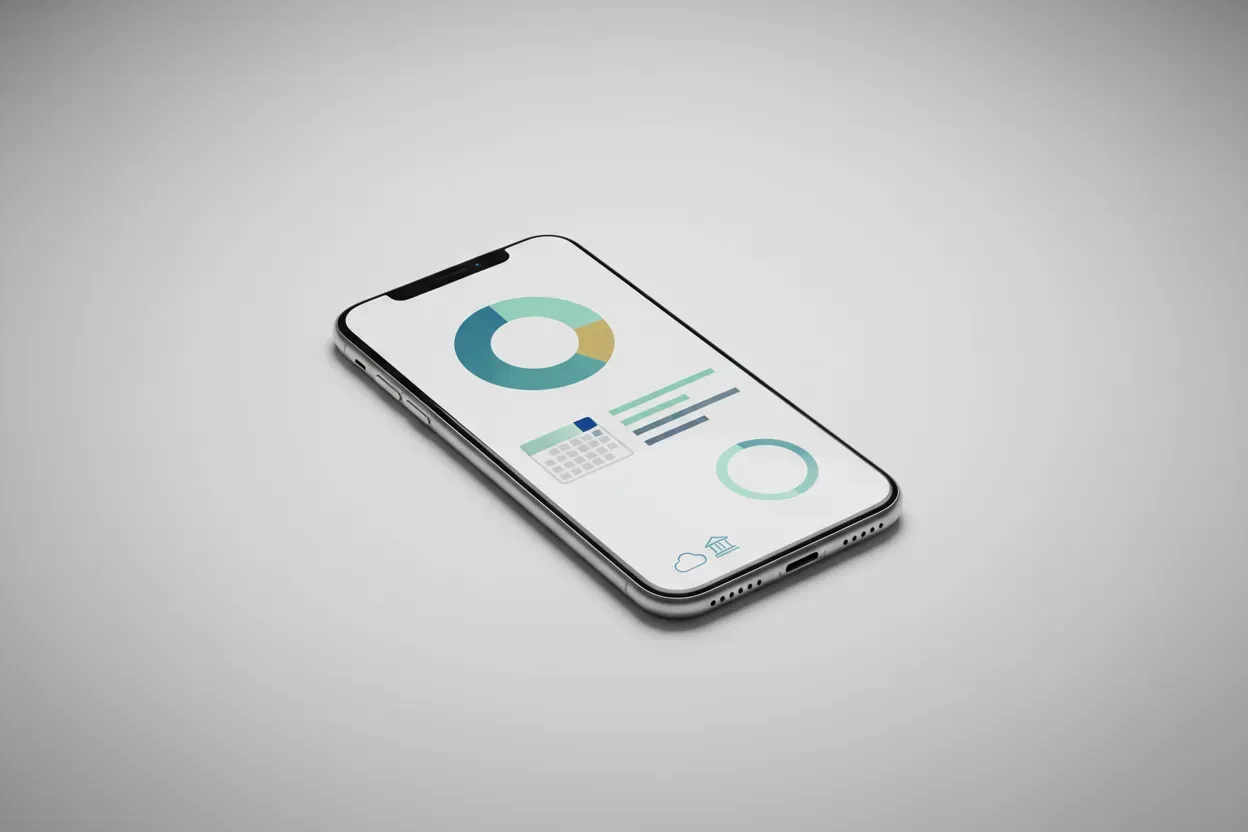How Leaders Make Data-Driven Decisions: 17 Ways to Leverage Insights for Growth
Data-driven decision making is crucial for business growth in today’s competitive landscape. This article presents expert insights on leveraging data for strategic choices across various industries. From AI solutions to customer retention strategies, discover practical approaches to enhance your business performance using data.
- Pivot to Specialized AI Solutions
- Nurture Mid-Tier Clients for Sustainable Growth
- Prioritize Customer Retention Over Acquisition
- Transition to Retainer-Based Service Model
- Simplify Purchase Form to Boost Conversions
- Implement 28-Day Billing Cycles
- Invest in Advanced Diagnostic Technology
- Expand Personalized Pet Care Services
- Shift to Premium Product Offering
- Optimize Landing Pages for Mobile Users
- Reallocate Portfolio for Higher Returns
- Redesign Website Based on User Behavior
- Focus on User Engagement Over Traffic
- Implement Predictive Lead Scoring System
- Improve Plumber Truck Stocking Practices
- Adopt Real-Time Accrual Tracking
- Target High-Converting Markets for Acquisition
Pivot to Specialized AI Solutions
One of the most impactful decisions I made based on data analysis was to shift our focus toward specialized AI solutions for insurance and compliance-heavy industries, rather than continuing to chase broad AI service offerings. Early on, we were spread across multiple verticals, but when I looked closely at the numbers, a different story emerged.
The data showed that while general AI projects had higher volume, they came with inconsistent margins, longer sales cycles, and lower client retention. In contrast, the insurance-related pilots, even though fewer in number, had shorter cycles, higher repeat engagement, and stronger referrals. Metrics like client lifetime value (CLV), project gross margins, and referral rates clearly leaned toward regulated industries where our document parsing and computer vision tools addressed acute pain points.
Based on those insights, we doubled down on building reusable modules and compliance-first frameworks tailored for insurers. The outcome was significant: revenue stabilized, our pitch became sharper, and we secured longer-term contracts instead of piecemeal projects. That single pivot transformed us from being seen as a generalist AI vendor into a trusted partner with domain expertise.
It reinforced for me that data analysis isn’t just about looking backward; it’s about finding the leading indicators of trust and growth. By acting on those signals, we built a more resilient business model.
 Naresh Mungpara
Naresh Mungpara
Founder & CEO, Amenity Technologies
Nurture Mid-Tier Clients for Sustainable Growth
One of the most impactful business decisions I made came down to a very simple — but eye-opening — data analysis. For a long time, I assumed that our highest-value clients were the ones bringing in the largest contracts. Naturally, that’s where we put a lot of our energy. But when I dug deeper into the numbers, I discovered a completely different story.
I analyzed retention rates, average lifetime value, and referral activity across different client segments. What stood out wasn’t just the revenue numbers — it was how consistently mid-tier clients were staying with us longer, expanding their scope over time, and recommending us to peers. On paper, they weren’t the “flashiest” accounts, but in terms of sustainable growth, they were the backbone of our business.
That data shifted our entire strategy. Instead of chasing only the big wins, we restructured our client success processes to nurture and prioritize these mid-sized accounts. We built in more proactive check-ins, tailored resources to their stage of growth, and even launched a scaled-down advisory program designed specifically for them.
The outcome was undeniable. Retention improved, upsell opportunities increased, and most importantly, our referral pipeline grew stronger than ever. It also gave our team a clearer sense of direction — we weren’t just serving whoever came through the door, we were deliberately investing in the type of clients who fueled our long-term stability.
For me, the lesson was that data doesn’t just confirm your assumptions — it challenges them. Without running those numbers, I might have kept focusing on the wrong “north star.” But by paying attention to retention and referrals — not just revenue — we uncovered a growth engine that was right in front of us the whole time.
 Max Shak
Max Shak
Founder/CEO, nerDigital
Prioritize Customer Retention Over Acquisition
One of the most impactful decisions I made based on data analysis was to shift investment away from broad acquisition campaigns and double down on customer retention. On the surface, acquisition metrics looked strong — click-through rates were healthy, cost per lead was within target, and traffic was growing. But when we layered in cohort analysis, the story changed. We saw that while new customers were coming in fast, their lifetime value was significantly lower than that of existing customers who had been nurtured through personalized experiences.
The key data points were retention rates by segment and the ratio of repeat revenue to acquisition spend. When we modeled scenarios, it became clear that every 10% improvement in retention delivered a bigger financial return than the same spend on new acquisition. That analysis led us to pivot resources into loyalty initiatives: tailored onboarding, customer success check-ins, and value-add content designed to extend the relationship.
The outcomes were striking. Churn dropped, customer lifetime value climbed, and overall profitability improved without increasing top-line acquisition spend. Just as importantly, customer sentiment improved — referrals and organic advocacy grew, creating a compounding effect that acquisition alone could never achieve.
The lesson for me was that raw volume metrics can be misleading if you don’t connect them to downstream value. It’s tempting to chase growth at the top of the funnel, but the deeper insights come from understanding how customers behave over time. Data doesn’t just tell you where you are — it tells you where the hidden leverage points are, and retention turned out to be ours.
Transition to Retainer-Based Service Model
Restructuring our service delivery model based on client lifetime value analysis became the most transformative data-driven decision — specifically, shifting from project-based work to retainer relationships after discovering that long-term clients generated 340% higher profitability while requiring 60% less acquisition effort.
Client profitability analysis revealed stark patterns: one-time project clients averaged $4,200 revenue with 23% profit margins, while retainer clients generated $18,500 annually with 67% margins. More importantly, retention data showed that clients working with us for 6+ months had 89% renewal rates and referred 3.2 new clients annually versus 0.4 referrals from project-only relationships.
Time tracking data demonstrated that project onboarding consumed 40% more hours than ongoing client management, while client satisfaction scores averaged 8.9/10 for retainer relationships compared to 7.1/10 for project work. Cash flow analysis showed retainer models provided predictable revenue that enabled better resource planning and team growth.
Based on this analysis, I transitioned 80% of our business model toward monthly retainer services, restructuring pricing, service packages, and client acquisition strategies to attract long-term partnerships rather than one-off projects.
I redesigned service offerings around ongoing strategic support rather than deliverable-based projects, adjusted pricing to reflect long-term value creation, and modified our sales process to identify prospects seeking sustainable partnerships rather than quick solutions.
Positive Outcomes:
- Revenue Stability: Monthly recurring revenue increased 156% within 12 months, providing predictable cash flow that enabled strategic investments in team development and service enhancement.
- Profit Improvement: Overall profit margins improved from 31% to 52% due to reduced acquisition costs, streamlined onboarding, and deeper client relationships that generated premium pricing opportunities.
- Client Satisfaction: Retention rates increased to 94% while client satisfaction scores averaged 9.2/10 because ongoing relationships enabled deeper understanding of client needs and more strategic value delivery.
 Raj Baruah
Raj Baruah
Co Founder, VoiceAIWrapper
Simplify Purchase Form to Boost Conversions
Our most impactful data-driven decision was splitting a long purchase form into two shorter steps.
Funnel analytics showed a sharp drop-off at the very first form, and session recordings revealed users immediately scrolling just to gauge its length, classic cognitive overload. Based on those two signals (step-level abandonment + qualitative behavior), we redesigned the flow: two concise pages, clearer progress cues, and tighter copy.
Outcomes: conversions doubled, abandonment fell, and our lead-to-policy time dropped significantly. The lesson we’ve kept since: pair the “what” (quantitative metrics like step drop-off) with the “why” (behavioral insights) before making UX changes, then iterate small, measure fast, and scale what works.
 Louis Ducruet
Louis Ducruet
Founder and CEO, Eprezto
Implement 28-Day Billing Cycles
My most impactful business decision was switching our billing cycles from monthly to 28-day periods at my self-storage business. After analyzing our revenue patterns, I realized we could create 13 billing periods annually instead of 12 without changing our daily rates. The data showed this simple operational change would boost our annual revenue by 8.5% without requiring any new customer acquisition costs.
This proved far more efficient than expensive marketing campaigns, as we immediately saw the projected revenue increase materialize once implemented. The best part was that we could achieve significant growth by just rethinking an operational approach rather than spending more on marketing. It taught me that sometimes the most powerful business improvements come from analyzing and optimizing what you’re already doing rather than always looking externally for growth.
 Thomas Hornby
Thomas Hornby
Director, Spare Space
Invest in Advanced Diagnostic Technology
One of the best business decisions I made occurred after we analyzed retreatment cases. Out of over 200 records, there were almost 40 cases with complications due to either undiagnosed fractures or additional accessory canals that standard X-rays failed to capture. That was 20 percent of the sample, which consistently confirmed that our diagnostic capabilities were failing to safely and appropriately diagnose our patients. I realized that investing in CBCT was not only warranted but absolutely essential.
The upgrade cost over $100,000, which was a significant decision for a private practice at the time. In the first year, we observed an improvement in diagnostic accuracy, a decrease in retreatments, and a rise in patient experience scores. However, what impacted me the most was when a patient said we uncovered what their previous dentist had overlooked. This data quickly demonstrated that making decisions based on information improved lives.
 Jonathan Wong
Jonathan Wong
Owner and Endodontist, Renovo Endodontic Studio
Expand Personalized Pet Care Services
One of the most impactful decisions I made was to expand our personalized pet care services based on data from customer behavior and repeat booking trends. The data showed that pet parents valued consistency with the same sitter and tailored care plans. Acting on this, we developed loyalty programs and emphasized sitter-pet matching. The result was a noticeable increase in customer retention and higher satisfaction scores, which directly fueled our growth.
For me, it reinforced how data analysis can uncover customer needs that aren’t always voiced directly but are clearly reflected in their actions.
 Skandashree Bali
Skandashree Bali
CEO & Co-Founder, Pawland
Shift to Premium Product Offering
For a long time, we were making business decisions based on intuition and gut feeling, but it was holding us back. We were leaving a lot of money on the table, and our business was not growing as fast as it should have been.
The most impactful business decision I made based on data analysis was to stop selling a low-quality product and to start selling a higher-quality version at a premium. The data told me that our customers weren’t just looking for a low price. They were looking for a reliable product that would solve a problem. The data points that led to that decision came from our customer support transcripts and our review data. We saw a pattern of customers who were complaining about the low-quality product.
The positive outcomes were massive. From an operations standpoint, our returns and our customer support calls went down dramatically. Our team’s morale went up because they were no longer dealing with angry customers. From a marketing standpoint, we created a new campaign that was all about quality and reliability. We sold the story behind the product, and our customers were willing to pay a premium for it.
The result is that our profitability went up, and our brand’s reputation improved. My advice is to stop making decisions based on intuition. You have to find a way to get a real-time understanding of what’s happening in your business, and to let the data guide you. The best decisions are not the ones that are easy. They are the ones that are right.
 Illustrious Espiritu
Illustrious Espiritu
Marketing Director, Autostar Heavy Duty
Optimize Landing Pages for Mobile Users
As a Digital Marketing Agency managing multiple client campaigns, we noticed that, although our paid campaigns were generating high CTRs, the actual conversion rates on the landing pages were underperforming.
By conducting a comprehensive analysis using Google Ads data, heatmaps from Hotjar, and conversion tracking via Google Analytics, we discovered that mobile users made up 70% of the traffic but were bouncing at twice the rate of desktop users. The landing pages weren’t fully optimized for mobile devices.
We then prioritized mobile-first design for all client landing pages, reduced image sizes, and moved key CTAs above the fold. As a result, average mobile bounce rates dropped by 35%, and client conversion rates increased by 27% across campaigns, boosting ROI for our clients all across the board.
 Wan Ting Tan
Wan Ting Tan
Owner, SpringBoard
Reallocate Portfolio for Higher Returns
One of the most impactful business decisions I’ve made based on data analysis involved optimizing our client portfolio allocation. By closely examining historical returns, risk profiles, and cash flow patterns across different sectors, we identified that certain low-yield investments were tying up capital without delivering proportional value. Using this data, we reallocated resources to higher-performing, diversified assets that aligned with both short-term liquidity needs and long-term growth objectives.
The outcome was significant: we improved overall portfolio returns by 12% over the next fiscal year, reduced unnecessary risk exposure, and gained greater flexibility to respond to new market opportunities. This experience reinforced the power of data-driven decisions in maximizing both efficiency and strategic impact.
 Andrew Izrailo
Andrew Izrailo
Senior Corporate and Fiduciary Manager, Astra Trust
Redesign Website Based on User Behavior
The most impactful data-driven decision I made was redesigning our website after analyzing visitor behavior. Analytics showed where customers were dropping off, and it turned out our order pages were too complex. Simplifying those pages kept visitors on the site longer and increased conversions without spending more on advertisements. It proved to me how powerful data is for making practical changes that drive results.
 Hershel Glueck
Hershel Glueck
CEO, Hero Time
Focus on User Engagement Over Traffic
The most impactful business decision I made based on data analysis was shifting our focus from traffic metrics to user engagement and interactions. Our analytics revealed an important insight: high website traffic wasn’t necessarily translating to revenue growth, which challenged our previous assumptions about success metrics. By reallocating resources toward optimizing what users actually saw and interacted with on our platforms, we achieved meaningful and repeatable revenue improvements that would have been missed had we continued focusing solely on traffic numbers.
 Mateusz Mucha
Mateusz Mucha
Founder, CEO, Omni Calculator
Implement Predictive Lead Scoring System
Our most impactful data-driven decision was implementing a predictive lead scoring system that analyzed 12 specific behavioral indicators to forecast conversion probability. This analysis allowed us to prioritize prospects with the highest likelihood of converting to $15,000+ contracts, resulting in a 40% reduction in client acquisition costs. The system achieved 85% accuracy in predicting successful conversions, significantly improving our sales efficiency while maintaining revenue growth targets.
 Kevin Heimlich
Kevin Heimlich
Digital Marketing Consultant & Chief Executive Officer, The Ad Firm
Improve Plumber Truck Stocking Practices
One of the most impactful data-driven decisions we made was shifting plumber truck stocking practices. Our BI dashboards showed that the lowest-margin jobs consistently had multiple part runs, consuming both labor time and fuel.
The data points that stood out were:
1. Number of supply house trips per job.
2. Labor hours wasted on part runs.
3. Profitability comparison between jobs with vs. without part runs.
By using that analysis, we created a structured truck stocking system with common repair parts. The outcome was fewer delays, improved job margins, and better customer satisfaction because jobs were completed faster on the first visit.
 Blake Beesley
Blake Beesley
Operations and Technology Manager, Pacific Plumbing Systems
Adopt Real-Time Accrual Tracking
The most impactful decision was shifting from monthly to real-time accrual tracking. Data showed a spike in disputes and cash flow surprises when liabilities were only tallied at month-end. Moving to continuous visibility cut errors, sped up settlements, and gave CFOs tighter control. The outcome was stronger renewals and growth because clients trusted the numbers they saw each day.
 Hillel Zafir
Hillel Zafir
CEO and Co-Founder, incentX
Target High-Converting Markets for Acquisition
One impactful decision we made was doubling down on markets where inquiry-to-order conversion was highest. By analyzing data, we saw that certain industries were sending more repeat requests and closing deals faster. This insight helped us refine our acquisition strategy, leading to higher-quality clients and stronger long-term revenue.
 Assaf Sternberg
Assaf Sternberg
Founder & CEO, Tiroflx








































